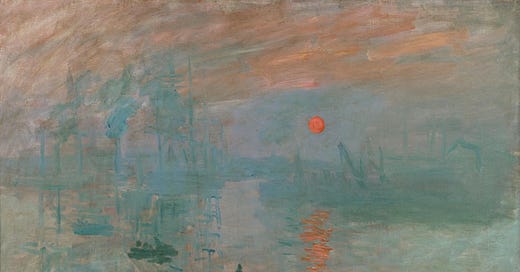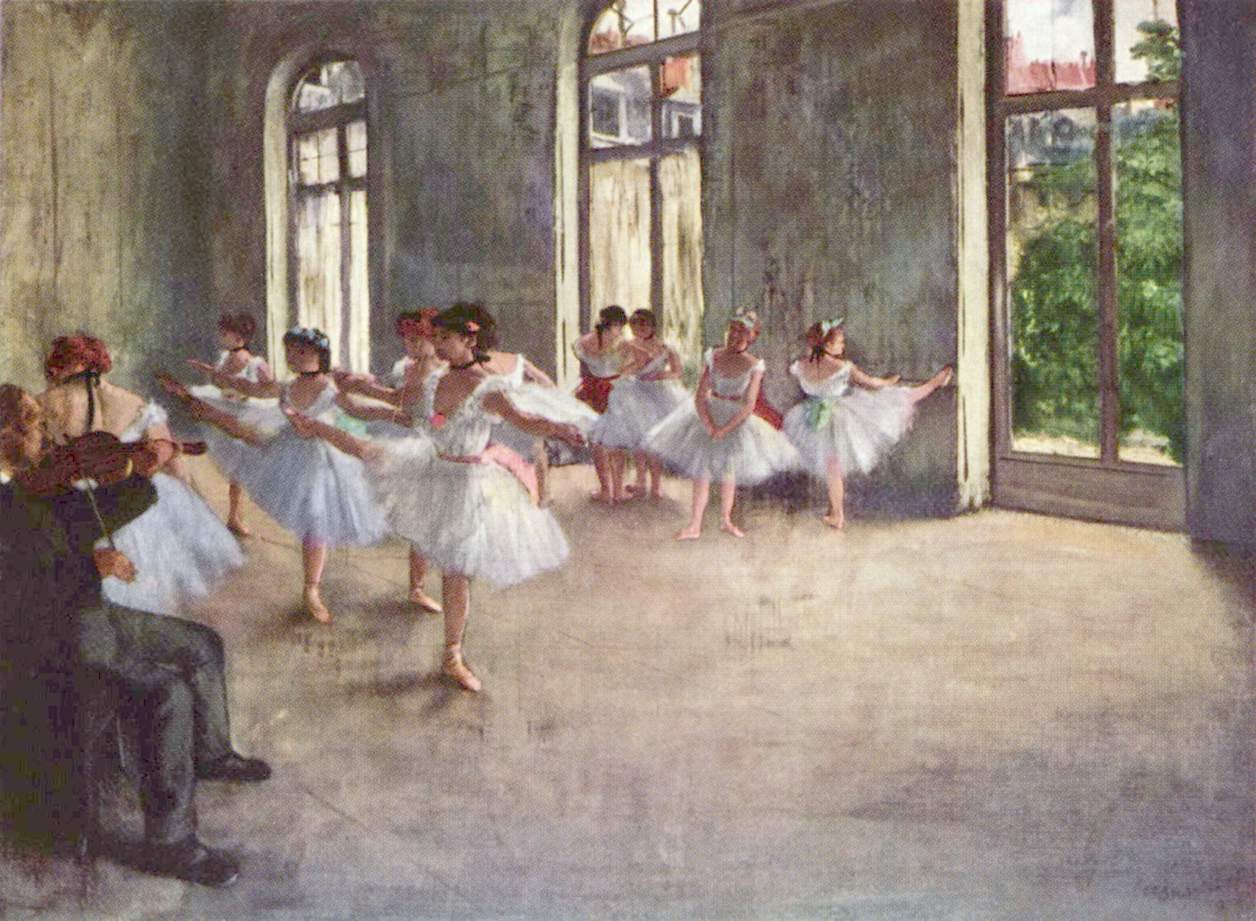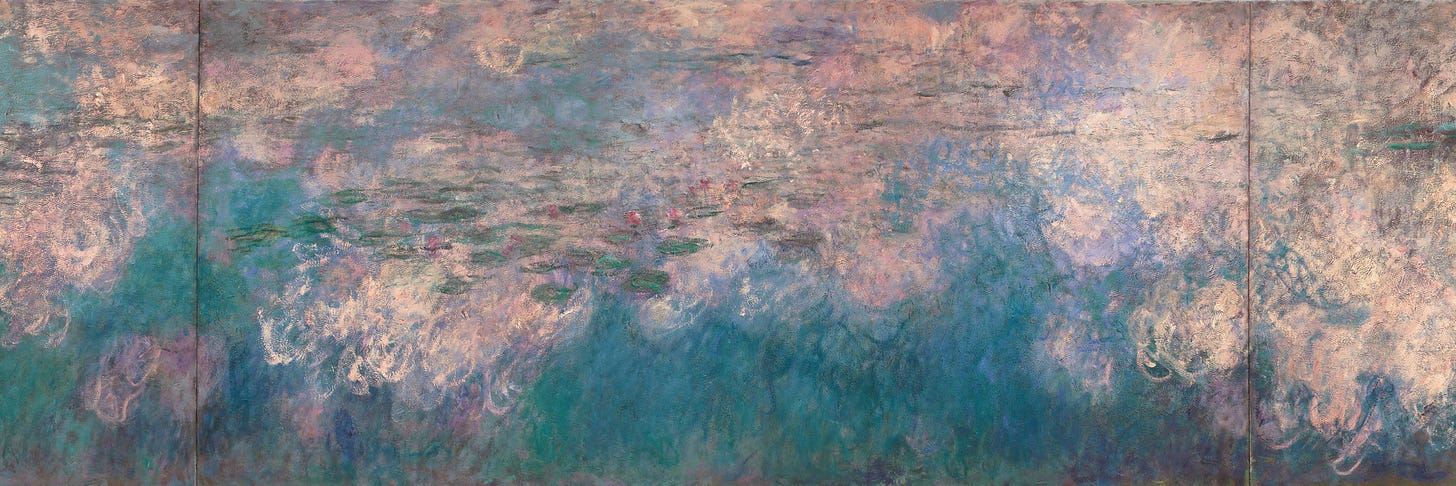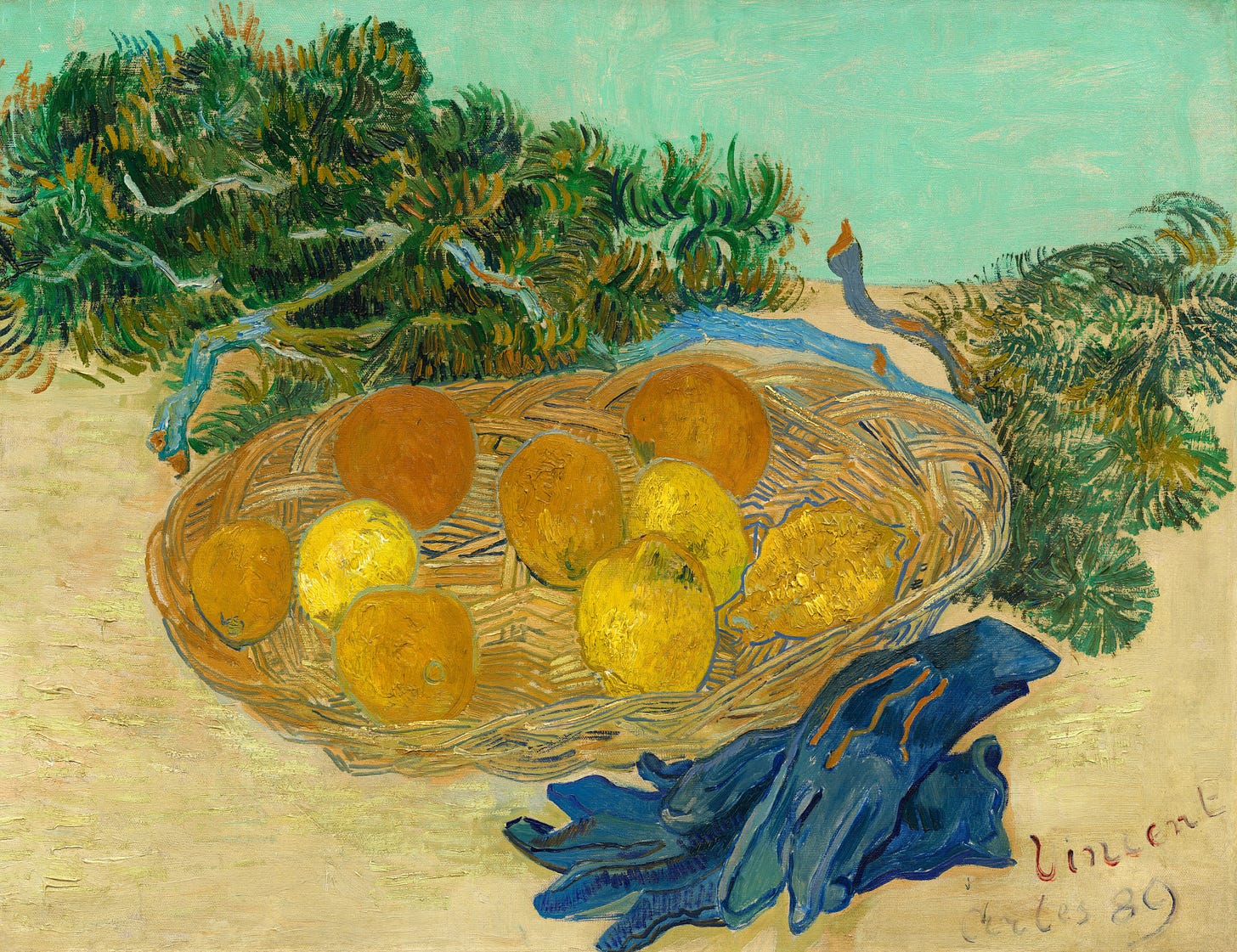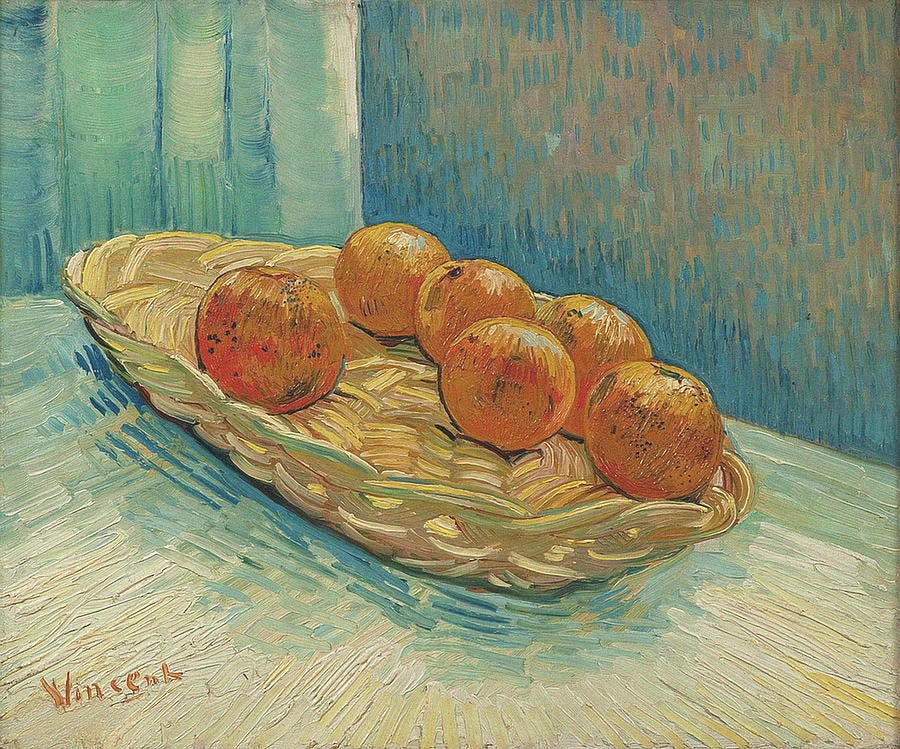Water is flowing down your arms; your feet are peeling a tangerine
Learning ballet through sensorial metaphors
Warning: This post contains an abundance of impressionist and post-impressionist paintings, which might not resonate with some viewers. Proceed mindfully.
Ballet resembles mathematics. It’s a formalisation of artistic movement, born in the Renaissance. It provides a clear, finite vocabulary of elegant base poses and movements, which can be endlessly combined in sequences, much like within a finite automaton. Like in mathematics, structure becomes a tool to facilitate beauty, rather than being a limiting force. An infinity of sequences unfolds, each telling a unique story.
Ballet moves are built from one another like theorems from axioms. To give you an example (if you don’t mind the French vocabulary): a pirouette is composed of a plié in the fourth position, from which the dancer gains momentum to turn with their leg up in a passé. In order to be able to do a pirouette (i.e. the theorem), one needs to be able to execute precisely and effortlessly the basic moves that make it (i.e. the axioms).
Turns out this is hard. The axiom-moves and poses require a very specific placement of the body, and it’s easy to get them wrong. A pose might look correct to an untrained eye, but the experienced ballet teacher will notice that your weight is not where it needs to be, or that your body is out of alignment. For example, you might be leaning on the back of your heels, and you will need to shift your weight forward to maintain your balance in more complex moves you will learn as you progress.
The highly specific nature of the basics makes them really hard to teach. The plain, technical language doesn’t speak well to the subtle nature of the body, so the teachers of beginner’s classes often make use of strong metaphorical cues that encourage the student to easily embody the correct position. A common one is to imagine a silk thread traversing your spine, and then to feel it being pulled at both ends. Representing this metaphor in your mind will suddenly make your body follow the correct elongated alignment.
I’ve heard so many metaphors of this sort during my ballet training, and they really work like magic in the moment. There are two of them that really spoke to my senses and stayed with me for years. Without even thinking, I use them in every ballet class I go to. I am forever grateful for the wonderful teachers who shared them.
Water flowing down your arms
Ballet was a vague childhood memory for me until I started it over in university. Joanna Lawrence was my first teacher. She was a ballerina and archaeology doctoral student researching Bronze Age rock art. She was strongly radiating both coolness and grace (aren’t these variables highly correlated?). We were covering the basics at the barre each week, in the little Old Labs building of the Newnham College.
The cue she gave us was about holding the arms in the second position (i.e. wide open to the side). When you hold your arm like this for the duration of an exercise, it’s easy to let your elbow soften down, creating an unaesthetic shape. Not anymore, after you embody Joanna’s beautiful prompt:
Imagine you are a statue.
There is a stream of water flowing from the top of your head
down your arms, through your shoulders,
through your elbows, through your wrists, through your fingers.
Make sure the water can reach the floor in front of you.
The ingenuity of this metaphor is that it makes your body engage in a lot of ways at the same time to create a continuous, round shape through which water can flow. It ensures your shoulders are down (otherwise there will be water accumulating between your neck and shoulders), your elbows are high enough that water will not accumulate in a hollow, but low enough so that the angle from your shoulder allows the water to flow, and finally that the wrists and fingers are smoothly following the line of you arm. The metaphor is a shortcut to achieve all these components and more: to have them all linked together to express a graceful state. To this day, this is the first thing I check when I open up my arms in any class: can the water reach the floor? I stay with the feeling of the flowing water even when my awareness inevitably needs to shift to other sequences I am learning.
Your feet are peeling a tangerine
While the ballet arms tend to be statuary, graceful and at times flowy, the feet are a powerful engine. You can imagine the metaphors used for teaching their movement will be a lot more dynamic than in the case of arms. Few things are more dynamic than citruses.
This is one of the many things I learnt in a contemporary ballet class taught by Katya Bourvis, a talented choreographer and movement director, with the aura of an angel. Simply being in her presence would make you feel lighter and rejuvenated.
We were doing a barre warm-up involving tendus. A tendu is an axiom-move in which the leg is extended along the floor until only the tip of the toe remains touching the floor, and the foot is completely extended in an arch. The foot, always in contact with the floor, needs to gradually articulate through all its parts: first the heel, then the ball of the foot and finally to a fully pointed toe. The reverse movement is then performed to bring the foot back to its original position. Especially when doing the reverse movement, students often forget the gradual peeling of the foot on the floor, which is an essential component of a lot of other moves. Katya’s prompt:
Your foot is peeling a tangerine along the floor
Peel it till the end
What I found fascinating about Katya’s metaphor is that the act of performing a tendu and the act of peeling a tangerine don’t necessarily look similar, but they do feel the same. It’s a feeling anybody can relate to, and just remembering it while doing your tendus will improve the quality of your movement.
Interestingly, this is not the only instance Katya used a citrus to describe the feet moving in relationship to the floor. To ensure the gradual rising up and down on our toes, with the correct weight placement, she asked us to:
Imagine a juicy orange underneath your foot
Squeeze it by pressing your heel down
Make sure you squeeze every drop
Expanded awareness
Working with sensorial metaphors is something so strong that I believe its effects are far greater than achieving correct ballet positioning. They are an immersive tool to improve your mind-body connection and to expand your awareness to unexplored territories.
Suddenly it’s not only you, with your little tangled mind and body. It’s the feeling of a juicy fruit, of a stream of water. It’s something bigger.
Have you heard any metaphor in your own movement practices? Maybe you created some yourself?
I am interested in discovering how other genres of dance or any form of movement make use of embodying sensorial metaphors, and how do these differ based on style. Share the wisdom!

